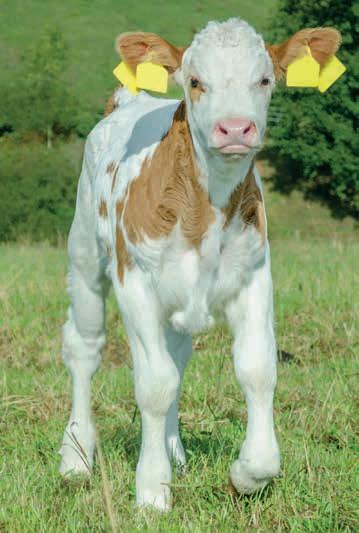
3 minute read
Completing the osmolality story
ELIXIR Energized Calf Milk has been developed with whole milk as the biological reference; the best of whole milk combined with the best of calf milk replacer. Specifically formulated for optimal development, resilience to disease and improved longevity. ELIXIR is a revolution in early life nutrition.
Research behind ELIXIR confi rmed that further understanding osmolality of calf milk replacer (CMR) can aff ect gastrointestinal permeability and, therefore, how eff ectively nutrients are absorbed. Osmolality is defi ned as the concentration of a solution expressed as the total number of solute particles per kilogram. Whole milk has an osmolality of 300-330 mOsm/ kg with most calf milk replacers typically having an osmolality of 400-600mOsm/kg. This considerable diff erence between CMR and whole milk leads to the disruption of the osmotic potential in the gut, sub-optimal absorption of nutrients and considerable bouts of diarrhoea. Calf scour (diarrhoea) is the most common disease in young calves, costing the cattle industry £11 million each year (AHDB).
Digestive disorders are the main cause of morbidity and mortality in calves
Adapted from Urie et al., JDS, 2018a
Many farmers use electrolytes intended for the treatment of dehydration due to diarrhoea. These oral rehydration solutions are used with the intention of rehydrating the calf and reducing the scour incidence. The calf, due to the scour has lost water, energy and minerals which need to be replaced for the calf to recover. Oral electrolyte solutions are administered to replace the sodium lost in diarrhoea with most formulations including sodium, glucose and some alkalising agents. In order to be eff ective, it is critical that the ratio’s and levels are carefully balanced so as not to upset the osmotic balance even further.

Further understanding of osmolality of CMR can affect gastrointestinal permeability and, therefore, how effectively nutrients are absorbed
Most oral rehydration solutions advise that you can feed them in calf milk or water. If fed with a calf milk replacer how is the osmolality aff ected, when you add an oral rehydration solution?
A scientifi c paper published by Wilms et al. (2019) in the Journal Of Dairy Science discussed that the administration of an oral rehydration powder or solution mix in whole milk or milk replacer has become a common practice in past decades as it allows a substantial reduction of labour associated with the treatment of diarrheic calves.
However, we need to consider that whole milk and especially milk replacer can already contain high amounts of lactose and minerals. Hypertonicity of milk replacer can be considered as a potential risk factor for calf health. This means that essential nutrients cannot be absorbed across the gut wall because the milk replacer can create a much higher osmotic pressure in the small intestine. Osmosis is defi ned as the process where molecules of a solvent move from a low concentration to a high concentration through a semi permeable membrane. By increasing osmotic pressure, we halt the process of osmosis. So if we create a hypertonic environment and induce this high osmotic pressure we actually reach an equilibrium in the small intestine where nothing can be absorbed across the gut wall. Add on top of that a hypertonic solution in the form of oral electrolytes to try and tackle dehydration and we end up making the problem considerably worse. This is because the oral electrolyte solution added in to the already hypertonic CMR merely increases the osmotic pressure, further exacerbating the problem at gut level and increasing dehydration.

So, what can we do to tackle this issue in our young calves? Firstly, mixing oral rehydration therapies with milk should be avoided:
milk Replacer can contain high levels of minerals and lactose oral rehydration solutions mixed with milk replacer > 600 mOsm/kg increase the risk of osmotic diarrhoea increased risks of hypernatremia (increase in sodium concentration in the blood) increased risks of abomasal bloat may compromise gut integrity Secondly, we have to ensure oral rehydration therapies are only mixed with water in order for them to be an eff ective treatment for dehydration. Feeding alongside water reduces the osmotic pressure in the gut and ensures we maintain a concentration gradient to enable calves to utilise therapies as effi ciently as possible.
Dr Laura Tennant
Ruminant Technical Adviser Trouw Nutrition www.trouwnutrition.com






